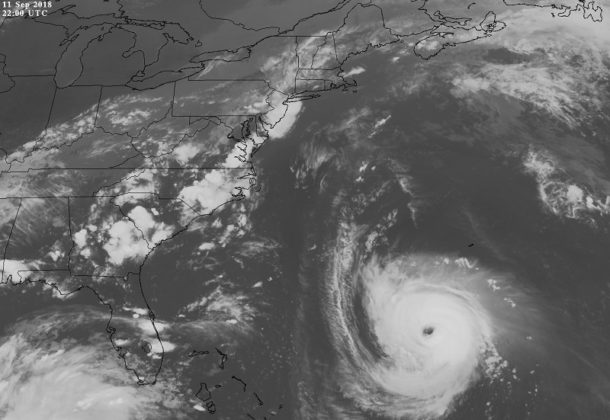Captain’s Message: All Storms Are Different

Message from the Cap’n is a compilation of fishing advice, waterman and weather insights, Chesapeake lore, and ordinary malarkey from the folks who keep their feet wet in the Potomac and St. Mary’s rivers.
The Storm of 1933 … caught everyone by surprise. It ended maritime transportation and commerce in St. Mary’s County by knocking down most of the steamboat piers in the Chesapeake Bay. That was 10 years before I was born. Waterman David Sayre (deceased) recounted that storm, recorded as archival record by Slackwater.
Here’s a look at the major storms in my lifetime. 1943 to the present:
Hazel in 1954: Oct. 15 came ashore as a category 4 at North Carolina. I was 9 years old at the time and remember my brother and myself pushing our bicycles against the Southeast wind down to the bridge connecting Piney Point and St. George Island. We would then hop aboard the bikes and have the gale propel us back home.
The tide was so high that my father let the pigs out of their enclosure next to our back yard for fear that they might drown. Later that day he took his dump truck down to the island to help someone move their possessions to the mainland. He and the truck were the last things that crossed the bridge that evening because Hazel blew the bridge down and carried it across St. George Creek. Then, there was isolation for several years.
Hurricane Agnes in 1972 pummeled the Chesapeake Bay watershed as a tropical storm. Baltimore Sun’s writer Tom Horton covered the event in the Bay Journal. This one storm forever changed the Chesapeake.
Isabel in 2003: The tide was about 6 feet above average for the duration of this storm. Mud deposits of several inches accumulated on the floors of Sea-Fruit Oyster House and the tide stayed up for a number of days. Two feet of thrashing water can leave a lot of mud to clean up. The water was halfway up the chain link fence that enclosed the yard. Our house was the first one built on pilings on the Island and Isabel climbed 6 feet up the pilings. The Red Cross fed the residents of St. George Island for more than a week because the roads were impassable from the number of trees blown down. BTW: the wind I guess was in the 80-95 mph range. As soon as we got everything straightened out and cleaned up, along comes Ernesto. It wouldn’t be until spring 2005 that everything looked green again on the Island.
Evacuation of St. George Island was voluntary during Isabel. It was carried out with a National Guard deuce and a half canvas covered truck (a 10-wheeler). It was high enough off the ground that it could navigate the 3 feet of water over the road. Responders tried to help many people who requested it, putting themselves in harm’s way. I am sure that the first responders were doing the best they could with the truck they had to use. But “rough ride” are not the words for it. It truly must have been a terrifying experience for all of them on board.
“We hid from the authorities during Hurricane Ernesto.”
Ernesto in 2006: The tide from Ernesto was 18 inches deep in the oyster house and presented the same amount of silt and mud as Isabel.
Winter Storm Finn in January 2024 battered parts of the Plains and Rockies early in the month before turning toward the East with severe weather, heavy rain, and snow, according to Weather.com. It was the second of at least three named winter storms to cross the Lower 48 in early January. On the East Coast, tide was about 3.5 feet above average, and the wind blew a steady clip around 50-60 mph.
The unrelenting westerly winds have done much damage to bulk heads along the east side of the Potomac River. I am writing this missive five days after the Jan. 8-9, 2024, open salvos of the storm and foul weather conditions persist. Snow is now falling in Piney Point.
As this tale awaits posting, we await the Next Big One!
Till next time, remember “It’s Our Bay, Let’s Pass It On.”
To learn about tours and trips into the Chesapeake, keep in touch with Fins + Claws on Facebook. Catch up on Messages from the Cap’n Member Page. Please visit Cap’n Jack’s lore and share with your social media sites. Or reach him here: [email protected] or 240-434-1385.

























storm histories